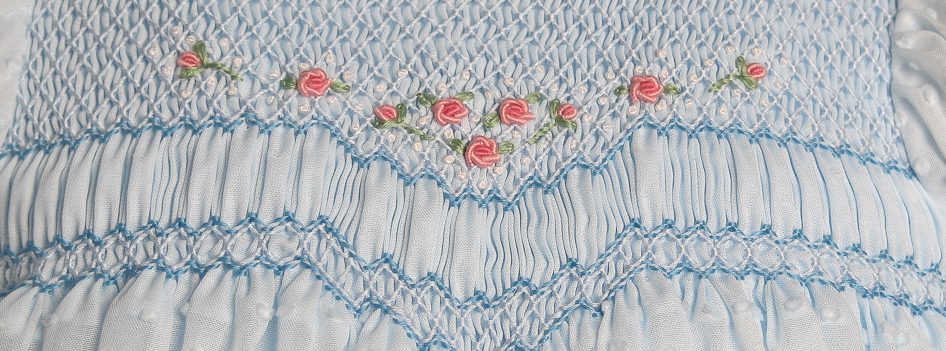This is another re-posting of a previously “lost” blog post with a few updates.
Often times a special occasion dress is made which involves much time as well as expense and is worn only a few times. Little girls tend to outgrow the length of the dress before the width. With a little planning the dress can be lengthened and another year or so of wear can be had.
When a hem is taken out, most often the crease line remains visible – not appealing on a beautiful heirloom dress. Since most of the time only a couple inches of length need to be added, a great solution is to cut the dress off at the crease, add a row of beading or insertion, and then you can add the cut off section of hem below the insertion and finish the lower edge with a lace trim or you can add a width of eyelet that compliments the insertion/beading and the remainder of the dress. The goal is to make it look like a plan. You may need to cut a bit more of the skirt length off, depending on what you add to the bottom of the dress. Of course, if you plan ahead when you first make the dress, you can set aside extra trims that you’ve already used in the dress for lengthening later on.
While these pictures are dresses that were not specifically lengthened, they are good examples of how you could lengthen a too short dress.


If you’ve used a floral print for the heirloom dress, the floral fabrics between the added on lace is a pretty choice as well.


Of course, a beautiful lace fancy band is always a wonderful choice!


Just a few more ideas.




Ribbon and lace offer a slightly more cost effective solution.


You can even add embroidered laces that use the colors in the smocking to add a beautiful hem and lengthen the dress.

For a more casual dress, adding a contrast band with some rick rack works well. By adding a second layer of rick rack, it looks more like a design option than an add-on.

Of course, a contrast band can be added with lace as well.

A scalloped band is a lovely and more unusual treatment for length.

Adding several color blocks is yet another option. This dress had an impossible stain on the lower skirt. Because of the various colors in the smocked flowers, a couple color block sections offered a great option!

I did a chain stitch over the seam for additional interest.

These are just a few examples of how to creatively and beautifully add length to a dress. As you can see, the possibilities are endless!! Hopefully it will jump start your creative juices and allow you to come up with even more ideas if you need to lengthen a pretty heirloom dress!
Happy stitching!
Kathy

















